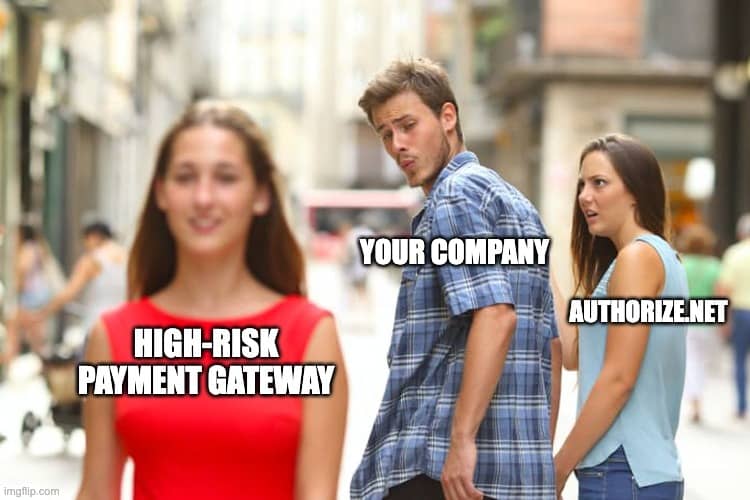How to Lower Your Payment Processing Fees

As a business owner, you’ve probably scratched your head, kicked at the dirt, and — with a fist to the sky — cried, “How can I lower my credit card payment processing fees?”
The last few years have shown that life is uncertain, and businesses have felt the squeeze. Online shopping has gained ground over the years, but a significant spike in online grocery sales in March 2021 showed businesses and consumers how easy it is to stay home and still purchase needed items.
Businesses pivoted massively. They knew they needed an online presence to meet the changing world’s demands. But not just any online presence — what they needed was an omnichannel, ever-present, eCommerce presence.
Remaining relevant and “trendy” somewhat went out the window as keeping the proverbial doors open took precedence. In this mad dash to stay afloat while maintaining compliance with new local laws, many businesses looked for ways to trim expenses and offset the slowdown in in-person sales.
In-store shoppers can pay for their items with cash, which is good for your bottom line. On the other hand, online shoppers must pay with a credit or debit card, which entails a host of fees and compliance measures.
What Are Credit Card Payment Processing Fees?
If you take credit or debit cards as payment, you’re no stranger to all the fees associated with credit card acceptance. There’s no escaping it. From merchant account setup fees to credit card processing fees, these added costs of doing business can eat into your profits.
If your type of business:
- Is in a high-risk industry
- Processes a particular type of transaction
- Processes a high volume of transactions
- Accepts specific kinds of cards
…your processing fees could be higher than other businesses.
Understanding credit card payments, associated processing fees, and how it works can help you search for services with lower costs. You can even alleviate some processing fees by encouraging customers to pay with a debit card. Debit cards pose less risk because:
- The customer is usually present throughout the transaction.
- Debit cards are linked to the customer’s bank account, and a sale is declined if the account doesn’t have the funds to cover the purchase.
Before we dive into the various payment processing fees, let’s review the parties to a typical transaction.
Who Takes Part in the Typical Transaction?
All sales involve your business and a customer. But, the final funds transfer from your customer’s bank to your store couldn’t occur without other parties playing a role in completing the sale. For any sale using a credit (or debit) card as payment, whether online or in-person, there are six main “parties” to the transaction:
- The customer
- The store, also known as the merchant
- A payment processor
- A payment gateway
- The acquiring bank
- The issuing bank
- Credit card associations
It’s helpful to remember that while some terms sound interchangeable, they’re quite different. For instance, the payment processor and payment gateway are two distinct parties.
- Payment processor- The payment processor acts as the middleman between the store and the bank that issued the customer’s credit or debit card. The payment processor checks that the customer’s account has enough funds to complete the purchase, that the account has no limits or holds placed, and that the card itself is valid. Once these checks are validated, the payment processor transfers the purchase amount from the customer’s account to the merchant.
- Payment gateway The payment gateway is the tech at the front of the transaction. It is responsible for obtaining, encrypting, and sending sensitive card data to the payment processor for authorization.
So, now you know who is involved in a transaction. But what happens during a transaction?
The Lifecycle of a Typical Payment Transaction
What happens each time someone purchases from you? Whether online or in-store, the average lifecycle of a transaction looks like this:
- A customer adds items to their cart on the merchant’s website.
- The customer begins the checkout process. If an online purchase, the customer enters their payment information.
- The merchant sends the cart’s contents and the customer’s information to the payment gateway.
- The payment gateway sends transaction information to the acquiring bank.
- The acquiring bank forwards the transaction information to the issuing bank.
- The issuing bank verifies the customer’s card information, authorizes the release of funds equal to the transaction amount, and relays the data back to the acquiring bank.
- The acquiring bank gets the issuing bank’s authorization.
- The acquiring bank informs the payment gateway that the sale has been authorized.
- The payment gateway alerts the merchant that the sale is approved and is processing.
- The merchant alerts the customer that the purchase is successful and complete, offering an order confirmation number, shipping information, etc.
It’s a lot of steps for a process that takes seconds to complete.
What Are the Most Common Payment Processing Fees?
Each party outlined in the sections above (aside from Customer and Merchant) has its own transaction fees. In addition to these fees, you may have to pay variable or flat monthly fees imposed by card brands, such as Mastercard, American Express, and Visa, that apply to merchants accepting online payments.
For instance, Visa imposes a Fixed Acquirer Network Fee (FANF). The fee, implemented in 2012, represents the Visa credit card association and is charged variably to businesses participating in Visa card acceptance. The rate each company pays depends on:
- The category code assigned to the merchant or MCC
- The merchant’s card acceptance method
- If the merchant solely accepts card-present transactions
- If the merchant is a card-present and card-not-present business
- If the merchant solely accepts card-not-present transactions
Other standard credit card processor fees include:
- The acquiring bank’s markup fees
- The credit card issuing bank’s fees, also known as interchange fees or interchange rate
- Credit card associations’ assessment fees
- Payment processors’ fees
The fees above occur with each transaction. But, additional costs may apply for the privilege of processing payments, including:
- Account setup or maintenance fees. Some payment processors don’t charge a setup fee, while others bundle this fee into the process when a merchant signs up.
- Know Your Customer (KYC) verification fees. While address authentication services help prevent fraud and maintain your business’s compliance, monitoring how these fees are applied is wise. Some services charge a monthly flat fee, while others charge a fee with each transaction.
- Chargebacks. Chargebacks are a fee by themselves — lost sales, revenue, and inventory. An additional fee is imposed each time a chargeback favors the customer.
9 Ways to Lower Your Credit Card Processing Fees
These fees we’ve addressed can add up fast — especially for small businesses. So, what can you do to reduce your credit card payment processing rates?
- Pass the Fees to Your Customers
We know this sounds like a last-ditch effort or like you’re shafting the very customers who keep your lights on. But, you might find that your customers don’t mind paying a small additional fee to purchase from you. For instance, you can post flat-rate prices for credit customers and offer a discount for cash-paying customers. On the other hand, you can post cash-only prices and impose a small surcharge fee on paying with credit or debit cards.
- Encourage In-Person Purchases
In-store, in-person transactions aren’t as risky for business owners or card issuers, so they come with lower interchange fees. Asking your loyal customers to buy from you in-store and physically swipe or insert their credit or debit card can help you cut down on payment processing fees. Payments made with an EMV chip card aren’t as easy to dispute, adding a layer of protection against maliciously fraudulent and friendly fraudulent chargebacks.
- Use Address Authentication
KYC, or Know Your Customer/Client, is an added step in fighting fraudulent purchases and credit card payments. With KYC, address verification services authenticate customer and client addresses against USPS databases. Card information supplied by card issuers can help ensure that the person completing an online order is who they say they are.
- Boost Your PCI Security Compliance
The PCI Data Security Standards (DSS) Council updates PCI Security Standards for merchants and offers a wealth of resources for merchants, including PCI Compliance Awareness training and other educational resources.
- Minimize Credit Card Fraud Risks
The more a security risk your business poses, the more you’ll pay in payment processing fees. As mentioned in #2, encouraging in-person purchases is a good start. You can even offer a small incentive for doing so, but don’t forget that “small” is the operative word here. You’re trying to save money!
Alternatively, you can ask customers for the card’s CVV code or the cardholder’s zip code. These small efforts help protect your business from chargebacks and associated fees.
- Provide ACH Payment Acceptance
Any merchant can accept automated clearing house (ACH) payments, also known as a bank-to-bank transfer. This payment type reliably eliminates bounced checks and presents a faster way for your business to receive payments. It also offers an additional payment method for your customers.
- Eliminate the “Middleman”
When you first set up your business bank account, enlisting your bank’s payment processing services might have seemed like a good idea. But here’s the thing — many small, local banks don’t have the necessary in-house resources for payment processing.
Instead, the bank outsources the service to a payment processing company, for which the bank must pay a fee. The bank then tacks on its fees and sends you the bill. You can significantly reduce your payment processor costs by partnering directly with a payment processing company.
- Negotiate!
No one has ever been charged additional fees for asking a question. Payment processing specialists understand the breakdown of your fees in relation to their pricing models. Therefore, your payment processor is the best source of advice for reducing your fees and cutting other costs related to your specific industry or business. You might even discover a handy nugget of information or, even better, receive a discount on your fees for being a loyal customer.
That said, the best way to negotiate a fee reduction is to show your payment processor the value you bring to their business. If you already process a fair amount of monthly transactions, use this to your advantage. You can also ask your processor how adding more monthly sales might reduce your processing fees. It’s all about volume.
- Make Sure Your Terminal Is Set Up Properly
Now, this way to lower your credit card processing fees might seem like foolish.
“Yes, of course, my terminal is set up correctly! If it wasn’t, I wouldn’t be able to process payments, silly!”
Well, true — but not entirely.
Consider this scenario for a moment:
When you opened your merchant account, you probably looked around for the best point of sale (POS) machine. Did you get your free terminal at the same time, possibly even from your merchant account service provider? Have you ever questioned whether your merchant account is correctly set up?
First, you need to review your terminal features. If there are features on your account that you don’t use or need, remove them.
And, how often do you close out your batches? All transactions should be processed within 24 hours of the sale. This timely handling decreases your transactions per period and can reduce your payment processing fees.
Bonus: #10. Partner With the Right Merchant Services Provider
Payment processing almost always requires your business to have a merchant account. But choosing the right merchant services for your specific business, transaction type, and transaction volume could result in much higher payment processing fees than you should be paying. Zenti can help. Get in touch with one of our high-risk payment processing solution specialists today to learn about our zero-fee and low-cost payment processing options.
Read Next

Find out whether Authorize.Net works for high risk merchants, what restrictions you might face and how to get approved.

Get expert advice on selling CBD products on Shopify, including compliance tips and setting up secure payment options.

Find out why Square may deactivate merchant accounts and steps to resolve issues and maintain uninterrupted payment services.
Need a High-Risk Merchant Account?
Disruption-free payment processing at the best price for your situation, guaranteed.
Get Free Guidance Now!